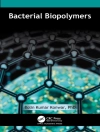Photovoltaic systems enable the sun’s energy to be converted directly into electricity using semiconductor solar cells. The ultimate goal of photovoltaic research and development is to reduce the cost of solar power to reach or even become lower than the cost of electricity generated from fossil and nuclear fuels. The power conversion efficiency and the cost per unit area of the phototvoltaic system are critical factors that determine the cost of photovoltaic electricity. Until recently, the power conversion efficiency of single-junction photovoltaic cells has been limited to approximately 33% – the socalled Shockley-Queisser limit.
This book presents the latest developments in photovoltaics which seek to either reach or surpass the Shockley-Queisser limit, and to lower the cell cost per unit area. Progress toward this ultimate goal is presented for the three generations of photovoltaic cells: the 1st generation based on crystalline silicon semiconductors; the 2nd generation based on thin film silicon, compound semiconductors, amorphous silicon, and various mesoscopic structures; and the 3rd generation based on the unique properties of nanoscale materials, new inorganic and organic photoconversion materials, highly efficient multi-junction cells with low cost solar concentration, and novel photovoltaic processes.
The extent to which photovoltaic materials and processes can meet the expectations of efficient and cost effective solar energy conversion to electricity is discussed. Written by an international team of expert contributors, and with researchers in academia, national research laboratories, and industry in mind, this book is a comprehensive guide to recent progress in photovoltaics and essential for any library or laboratory in the field.
Tabla de materias
Preface;
Crystalline Silicon Solar Cells with High Efficiency;
Tandem And Multiple-Junction Devices Based On Thin-Film Silicon Technology;
Thin-Film Cd Te Photovoltaic Solar Cell Devices;
III-V Tandem Solar Cells for Concentrating Photovoltaics; Thin film PV based on earth-abundant materials;
Chemistry of Organic Dyes for Dye-Sensitized Solar Cells;
Perovskite Solar Cells;
All-Oxide Photovoltaics;
Active layer limitations and non-geminate recombination in polymer/fullerene;
bulkheterojunction solar cells;
Singlet Fission for Photovoltaics;
Quantum Dot Solar Cells and Multiple Exciton Generation;
Hot Carrier Solar Cells;
Intermediate Band Solar Cells;
Up and Down Conversion for Thin Film Solar Cells and Luminescent Concentrators based on Rare Earth Chromophores;
Triplet-Triplet Annihilation Upconversion for Photovoltaics;
Quantum Rectennas for Photovoltaics;
Real World Efficiency Limits beyond Shockley-Queisser;
Grid parity and its implications for energy policy and regulation
Sobre el autor
Professor Nozik is a Professor Adjoint in the Department of Chemistry and Biochemistry and a Senior Research Fellow Emeritus at the National Renewable Energy Laboratory (NREL) in Golden, Colorado; NREL is one of the National Laboratories of the U.S. Department of Energy. He maintains an active interaction and collaboration with his colleagues at NREL.
Professor Conibeer is deputy director of the School of Photovoltaics and Renewable Energy Engineering at the University of New South Wales, Australia. His research interests include third generation photovoltaics; hot carrier cooling in semiconductors and phonon dispersion modulation in nanostructures.












